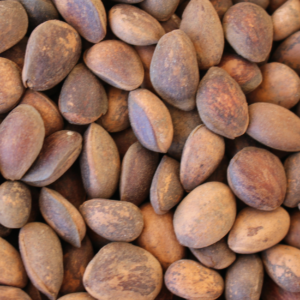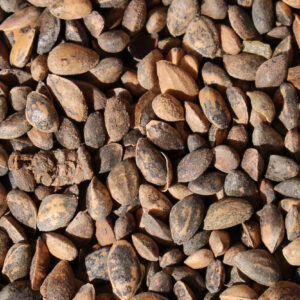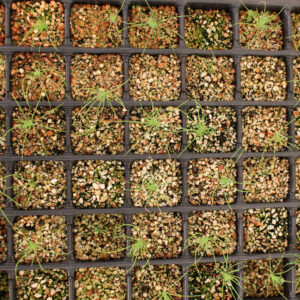Seeds
-
SOLD OUT
 Select options This product has multiple variants. The options may be chosen on the product page
Select options This product has multiple variants. The options may be chosen on the product pagePinus Parviflora Seeds – Japanese White Pine Seeds
9,90 € – 49,90 € -
SOLD OUT

 Select options This product has multiple variants. The options may be chosen on the product page
Select options This product has multiple variants. The options may be chosen on the product pagePinus Thunbergii Seeds – Japanese Black Pine Seeds
9,90 €
Growing Bonsai from Seeds: A Comprehensive Guide
Growing bonsai from seeds is a rewarding and meditative process that requires patience, dedication, and a deep appreciation for the art of miniature tree cultivation. Unlike acquiring pre-grown bonsai, starting from seeds allows you to shape and nurture your bonsai from the very beginning, providing a profound connection to your plant. This article will guide you through the steps of growing bonsai from seeds, including seed selection, germination, early care, and long-term cultivation.
Selecting the Right Seeds
Choosing the right seeds is the first and perhaps most crucial step in growing bonsai. Not all tree species are suitable for bonsai, so it’s important to select seeds from species that are known to thrive as bonsai. Here are some popular choices:
- Japanese Maple (Acer palmatum): Known for its beautiful foliage and elegant structure.
- Chinese Elm (Ulmus parvifolia): Hardy and easy to shape, ideal for beginners.
- Juniper (Juniperus spp.): Classic bonsai tree with fine needles and strong branches.
- Pine (Pinus spp.): Symbolic of resilience and longevity, with a traditional bonsai aesthetic.
- Cherry Blossom (Prunus serrulata): Offers stunning spring blossoms.
When purchasing seeds, ensure they come from a reputable source to guarantee their viability and quality.
Germination Process
The process of germinating bonsai seeds involves several steps, including stratification, which is crucial for many tree species.
Stratification
Stratification is the process of simulating natural winter conditions to break the dormancy of seeds. This is necessary for species that require a period of cold to germinate.
- Cold Stratification: Place the seeds in a moist medium, such as a mix of sand and peat moss, and store them in a refrigerator. The duration varies by species, but it typically ranges from a few weeks to several months. Japanese maple seeds, for instance, require about 90-120 days of cold stratification.
- Warm Stratification: Some species may require a period of warm stratification before or after cold stratification. This involves keeping the seeds in a warm, moist environment for a set period.
Sowing the Seeds
After stratification, the seeds are ready to be sown. Here’s a step-by-step guide:
- Prepare the Soil: Use a well-draining bonsai soil mix. A combination of akadama (a type of volcanic clay), pumice, and lava rock is ideal.
- Plant the Seeds: Sow the seeds on the soil surface and lightly cover them with a thin layer of soil or sand.
- Watering: Water the soil gently to avoid displacing the seeds. Ensure the soil is consistently moist but not waterlogged.
- Lighting: Place the seed containers in a location with indirect sunlight. Too much direct sunlight can dry out the soil and harm the delicate seeds.
- Temperature: Maintain an appropriate temperature based on the seed species. Generally, room temperature (around 20°C or 68°F) is suitable for most bonsai seeds.
Early Care and Seedling Development
Once the seeds have germinated, they will sprout into seedlings. This stage requires careful attention to ensure healthy growth.
Transplanting Seedlings
As the seedlings grow, they may become crowded in their initial container. When they have developed a few sets of true leaves and are sturdy enough to handle, they should be transplanted into individual pots.
- Preparing New Pots: Use small pots with proper drainage holes and fill them with bonsai soil mix.
- Transplanting: Gently remove the seedlings from their original container, being careful not to damage the roots. Plant them in the new pots and water thoroughly.
Watering and Fertilization
Young bonsai require regular watering to maintain soil moisture, but overwatering can lead to root rot. Check the soil daily and water when the top layer begins to dry out. Fertilize the seedlings with a balanced, water-soluble fertilizer at half-strength every two weeks during the growing season.
Pruning and Shaping
Early pruning is essential to develop the structure of your bonsai. Once the seedlings are a few months old and have established themselves, begin by pruning the main stem to encourage lateral growth. Regularly pinch off new shoots to maintain the desired shape and promote a dense canopy.
Intermediate Care
As your bonsai seedlings mature, intermediate care focuses on more advanced techniques to refine their shape and ensure their health.
Repotting
Repotting is necessary to prevent the roots from becoming pot-bound and to refresh the soil. Most bonsai trees need repotting every 2-3 years, but this can vary depending on the species and growth rate.
- Timing: The best time to repot is in early spring, just before the growing season begins.
- Procedure: Carefully remove the tree from its pot, prune the roots to remove about one-third of the root mass, and place the tree in fresh bonsai soil.
Advanced Pruning and Wiring
Advanced pruning techniques, such as branch pruning and defoliation, help shape the bonsai and control its size. Wiring is another technique used to train branches into specific shapes. Use aluminum or copper wire to wrap around branches, gently bending them into the desired position. Be sure to check the wires regularly and remove them before they cut into the bark.
Pests and Diseases
Bonsai trees are susceptible to pests and diseases, just like their full-sized counterparts. Common pests include aphids, spider mites, and scale insects. Regularly inspect your bonsai for signs of infestation and treat with appropriate insecticides or natural remedies.
Long-Term Care and Maintenance
Growing bonsai is a lifelong journey that involves continuous learning and adaptation. Here are some key aspects of long-term care:
Seasonal Care
Different seasons require different care techniques:
- Spring: This is the prime growing season. Increase watering, fertilize regularly, and perform major pruning and repotting.
- Summer: Protect your bonsai from excessive heat and sun. Water more frequently and watch for pests.
- Autumn: Gradually reduce watering and fertilization. Begin preparing the tree for winter dormancy.
- Winter: Many bonsai species need a period of dormancy. Protect them from frost by moving them to a sheltered location or using mulch.
Continuous Learning
Join bonsai clubs, attend workshops, and read books to continually improve your skills. The bonsai community is a valuable resource for advice and support.
Enjoy the Journey
Growing bonsai from seeds is a slow and meditative process. Enjoy each stage of development and take pride in the artistry and care you invest in your trees.
Conclusion
Growing bonsai from seeds is a deeply rewarding endeavor that requires patience, dedication, and a love for the art of bonsai. By carefully selecting seeds, following proper germination and early care techniques, and committing to long-term maintenance, you can cultivate beautiful miniature trees that bring a sense of peace and accomplishment. Embrace the journey, learn from each experience, and watch as your bonsai transform from tiny seeds into stunning works of living art.
